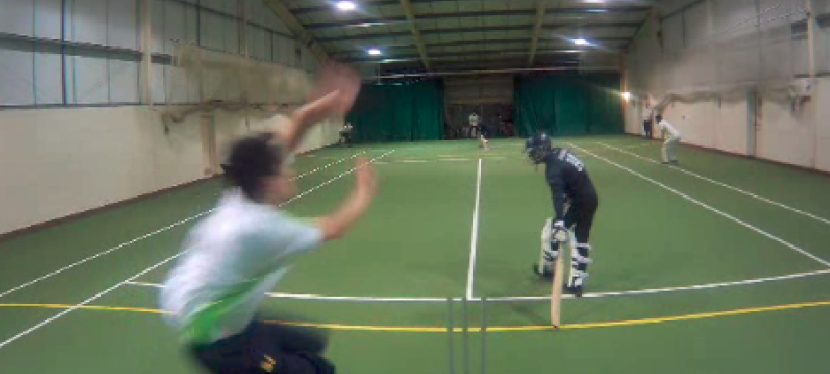Cricket is a hard sport. And it is made even harder by the pressure we put ourselves under!
Part of a coach’s role (and it is a really, really difficult one!!), is educating them about the game works…
…and that is annoying sometimes. So get used to it!!
UNDERSTANDING THE GAME
Players tend to pile unnecessary pressure onto themselves. Setbacks are exaggerated in their minds. Small hiccups are seen as failures. Brilliance from the opposition is misinterpreted as their own error.
Getting them to understand the rhythms of the game – with peaks and troughs, shifts in momentum – is absolutely vital. This understanding helps them to brush off difficult moments, and find solutions.
Below are a few examples of this, that I find myself dealing with regularly.
Good start means “I need to kick on”.
At some point, the bowlers will put a string of good balls together. The batter might miscue a few shots in a row. The key is in accepting this, and being in a good frame of mind to turn it around.
Not all, but most innings progress in waves. To them, a small trough feels like it’s all going wrong.
How to deal with this:
- “WHAT’S THE PLAN”?: Keep them thinking forward, and about the solutions. Not about what has just happened.
- PERSONAL EXPERIENCE: I have a few stories of my own struggles while batting. When I scored my only league hundred. I batted out 7 maidens. Try and give them the sense that difficult patches end. They don’t have to be terminal.
Bad shot? Or good ball?
One bad shot? Not a problem!
The bowler bowls an unplayable ball. The ball beats the edge of the bat, just missing the stumps. Between balls, the batter looks frustrated…pacing around practicing what they “should have done”.
How to deal with this:
- “BAD SHOT? OR GOOD BALL?: Literally ask them this.
- “WHICH BALL CAN YOU TAKE ADVANTAGE OF”?: There’s no point dwelling on the one you can’t hit. What opportunities are there to score? Make the batter feel like they can still capitalise, if the chance comes.
- “KEEP MOVING WELL”: This is better than battening down the hatches…and prodding at every future ball. Once a batter becomes “passive”, they are highly unlikely to get back to form again.
A good shot doesn’t always feel amazing
This happens a lot. Loads of batters dig out a yorker, for example, and are convinced that they have made a mistake. This mindset forces an error later on.
Just because the ball hasn’t cracked satisfyingly off the bat, does not mean there is cause for concern.
How to deal with this:
- “WHAT PART OF THE BAT DID IT HIT?: The toe, obviously! “Is that going to feel good”? Of course not. “give yourself a break then”!
They have to understand that certain shots do not, and never will, feel good. But they are still good. - WELL DONE FOR KEEPING THAT OUT!: Make sure that praise isn’t just reserved for fours and sixes.
Forgetting the bigger picture
After 10 beautifully struck shots, the 11th is a slight miscue. The batter is dismayed with themself!
They act like this is the end of the world. Before you know it, they are scratching around, and lose their cool.
How to deal with this:
- “BLOCKS OF 10”: I use a phrase “blocks of 10” (it can be 5 or 6), to encourage batters to think about success in the longer term. 100% control is highly unlikely – especially in matchplay. But 80% might be do-able! Make sure perfection as seen as the exception, not the norm!
- BODY LANGUAGE: I like to remind them that the bowler is just as annoyed as you! They feel they deserve a wicket. Even if you made a mistake, so what! You’re still there.
Imposter syndrome
The batter hits it in the air, but the ball is dropped. Yes! A second life!! But they don’t see it like that.
Instead of enjoying their second life, the batter’s head drops. They bat with an air of “I better hit out, before it happens again”. It’s only a matter of time before they throw their wicket away.
How to deal with this:
- DISTRACTION: This is the trickiest one to handle. If you feel that a player gets too despondent, it’s probably best to forget about the dropped catch completely. Just talk about something else.
Getting away with a mix-up…
The batters are stranded out their ground, but get back in time.
Frustrating, yes! Not a huge deal. But a simple misunderstanding like is often turned into a full blown crisis.
- The batters decide to run off the next ball, regardless of where it went
- They become hyper-negative, turning down easy chances.
- They take over each other’s calling, causing a breakdown in trust
Over-compensating can be worse the initial error. Advise them against such extreme reactions. Try to get them to cool down. Talk to each other between the overs.
How to deal with this:
- BE PHILOSOPHICAL: Try not to latch onto every mistake, as if it’s the end of the world. All this will achieve is getting them to do the opposite of the ball before.
- GET THEM TOGETHER: Chat between overs. Discuss where the gaps are, or if you are intending to work the ball for a quick single in a certain area. This helps get them primed, and on the same wavelength
- WAS IT REALLY A BIG MISTAKE: Running is all about risk. The level of acceptable risk changes wildly through a match. A run out may be acceptable, if, on average, the pair would have made a single more often than not.



